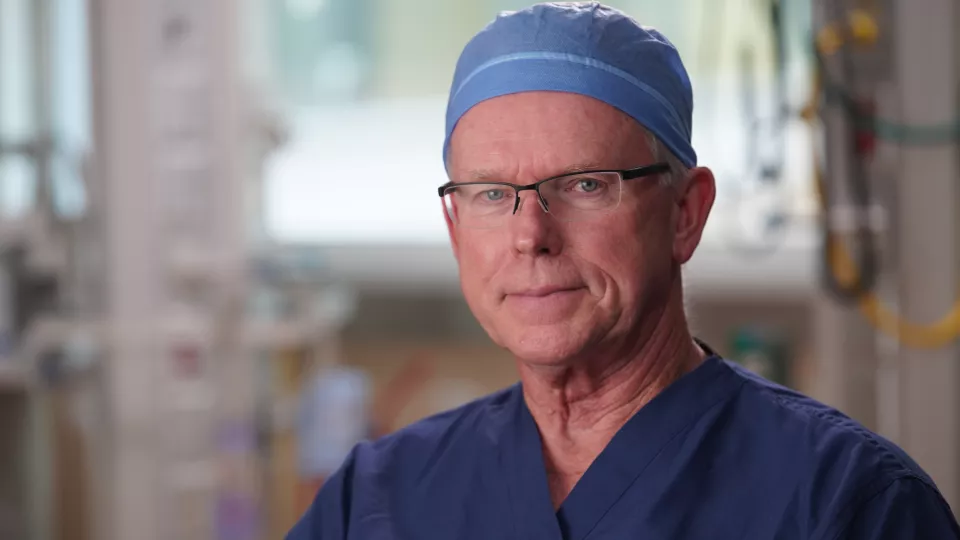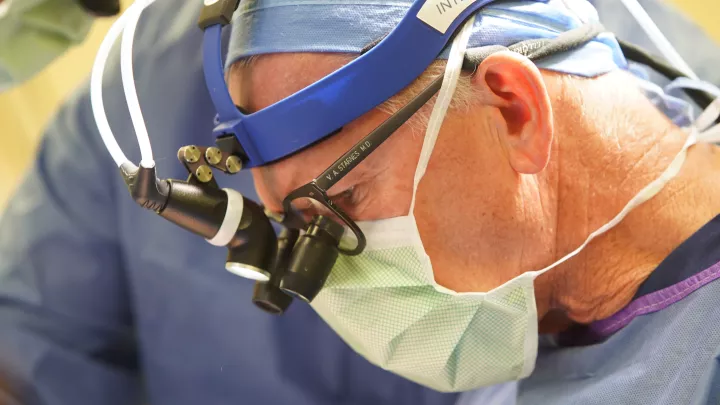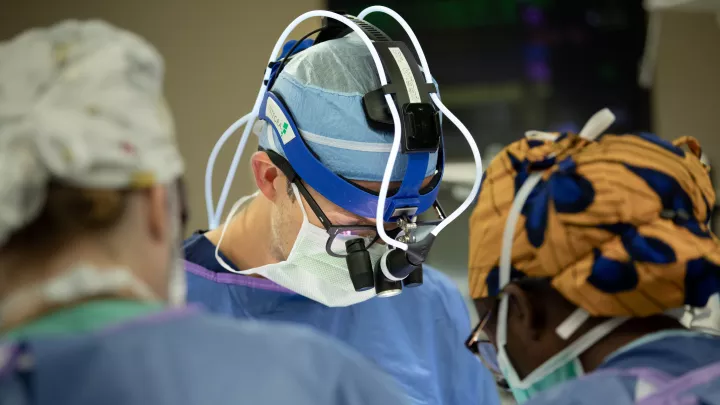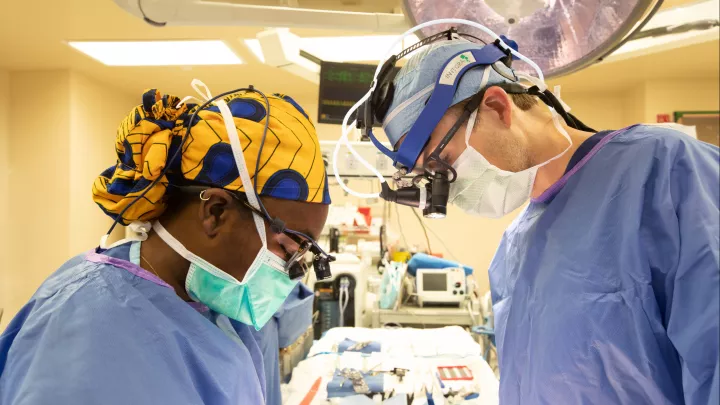
Vaughn Starnes, MD, Chief of Cardiothoracic Surgery and Co-Director of the Heart Institute at Children's Hospital Los Angeles
CHLA Surgeon Leads Hands-On Course on Ross Procedure
Children’s Hospital Los Angeles is one of the few pediatric centers in the country with extensive expertise in performing the Ross procedure in young patients—including neonates less than a month old.
Vaughn Starnes, MD, Chief of Cardiothoracic Surgery and Co-Director of the Heart Institute at CHLA, recently co-led a special hands-on course on how to perform this complex operation, which uses a patient’s healthy pulmonary valve to replace a diseased aortic valve.
The sold-out course took place Jan. 26 at the Society of Thoracic Surgeons (STS) annual meeting in Los Angeles. Dr. Starnes—a world leader in the Ross procedure—was invited to lead the training with Ismail El-Hamamsy, MD, PhD, of The Mount Sinai Hospital in New York City. CHLA cardiothoracic surgeons Cynthia Herrington, MD; Demetrios Mallios, MD; and Luke Wiggins, MD, all served on the course faculty.
The training covered how to perform the operation from start to finish—with a focus on the most complicated aspects of the procedure, including removing the pulmonary valve from the right ventricle.
Dr. Starnes gave a demonstration at the beginning of the course. Attendees then had an opportunity to perform a Ross on a porcine model, with experienced faculty available to instruct and answer questions. The 33 attendees included both early career surgeons and experienced surgeons looking to refine their skills and learn new techniques.
“The Ross procedure has been gaining in popularity in the U.S. in recent years, but it’s a technically demanding operation,” Dr. Starnes says. “The goal was to train more surgeons in how to safely perform it in both pediatric and adult patients.”
Improved long-term survival

One of the key advantages of the Ross is that it provides an aortic valve made of the patient’s own tissue. In children, that means the valve naturally grows with a child over time.
“I tell families, ‘Just like your child will outgrow their shoes, they will outgrow a mechanical valve,’” says Dr. Wiggins. “With the Ross procedure, the child doesn’t need multiple operations to upsize the aortic valve.”
The Ross procedure also does not require the patient to be on a lifelong blood thinner. And 30-year studies conducted at Children’s Hospital Los Angeles have shown that the Ross has excellent long-term durability even in infants and neonates—especially for those who have isolated aortic valve disease.
Studies have also shown that long-term survival rates for patients with a Ross match those of the general population. In contrast, over 20 years, patients with prosthetic aortic valves have 15% to 20% lower survival than the age-matched general population.
"The Ross does not have that drop-off in survival over time,” says Dr. Starnes, the H. Russell Smith Foundation Chair in Cardiothoracic Surgery at CHLA. “That is a big reason why we’re seeing renewed interest in this procedure.”


